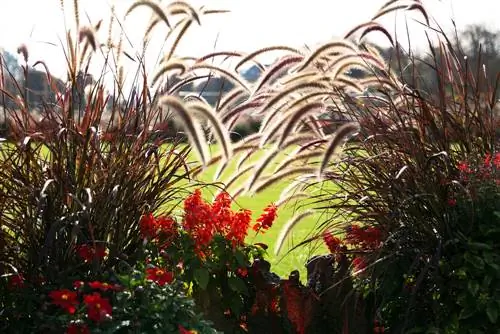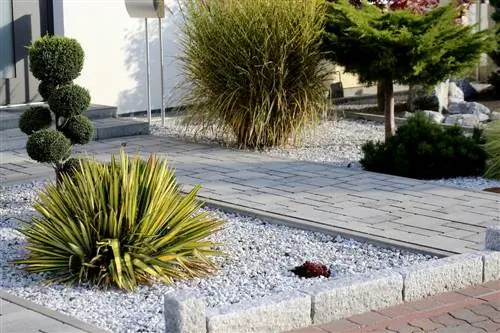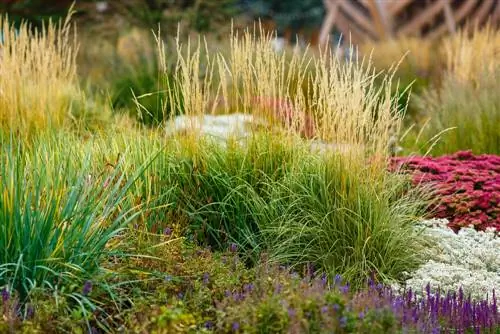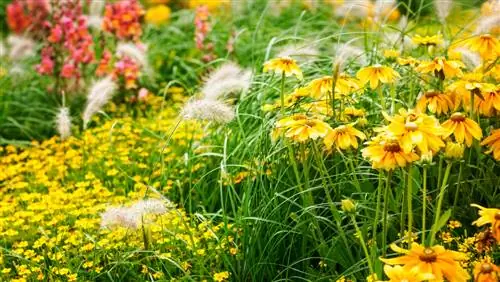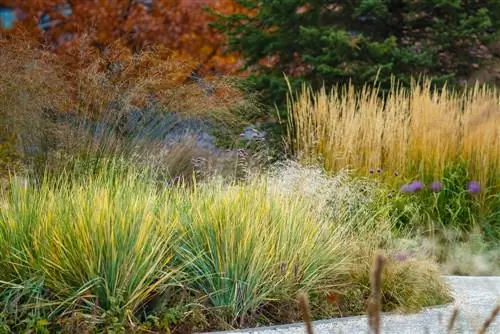- Author admin [email protected].
- Public 2023-12-16 16:46.
- Last modified 2025-01-23 11:21.
As versatile as the grasses are, they can also be used in garden design and entire beds can be planted with them. These don't have to be boring at all, because grasses can also have very decorative flower spikes.
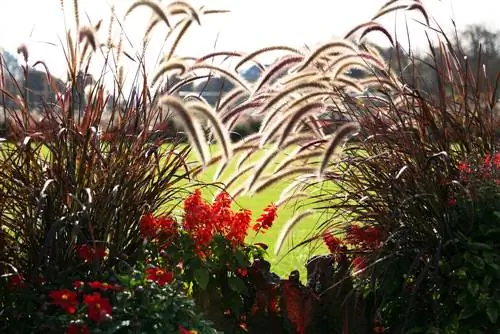
How do you design a bed with grasses?
A bed with grasses can be designed in a variety of ways by combining different species such as miscanthus, pampas grass or pennisetum grass with suitable perennials. Pay attention to the location needs of each plant and create harmonious and contrasting beds.
What does the perfect location for grasses look like?
There are suitable grasses for (almost) every climate and every location. Some prefer sunny locations, others prefer shade or partial shade. The nature of the soil is also important when selecting suitable grasses, because while some grow best in dry soil, others need sufficient moisture to thrive.
Grasses for moist soil
Reeds are particularly suitable for damp areas. Although they are very frugal, they still have their pitfalls. There are so-called real reeds, which thrive in your pond, and false reeds or sweet grasses, some of which do not like moist soil. Pole reed, cotton grass, Cyper grass or sedge are also suitable for damp areas of your garden or near ponds.
Grasses as solitary plants
Some grasses are so impressive that they look best as solitary plants. These primarily include the tall-growing varieties, such as miscanthus, cattail, pampas grass or garden riding grass. They are also an eye-catcher in the winter garden and still look attractive even with a small cap of snow. Find out here what you can combine your pampas grass with.
Which plants harmonize with grasses?
Grasses can be combined excellently with a wide variety of perennials. Feather grass or pennisetum grass support the effect of your perennials particularly well. This way you can create contrasting, yet harmonious beds. Grasses, especially tall ones, also play an important role in a Japanese garden. They look great in a gravel bed.
Interesting ornamental grasses:
- Miscanthus: depending on the species up to 3.50 m high, suitable as a solitary plant, beautiful autumn color
- Pampas grass: height up to 90cm, inflorescences up to 2.50 m, sensitive to frost
- Garden riding grass: up to 1.50m high, well suited for group planting
- Diamond grass: approx. 1 m high, pink-silvery flower spikes
- Pennisetum grass: up to 1.30 m high, soft “pushy” flower spikes
Tip
Before planting an ornamental grass in your garden, read the care instructions on the pot so that you can find the right place for each grass and enjoy it for a long time.

